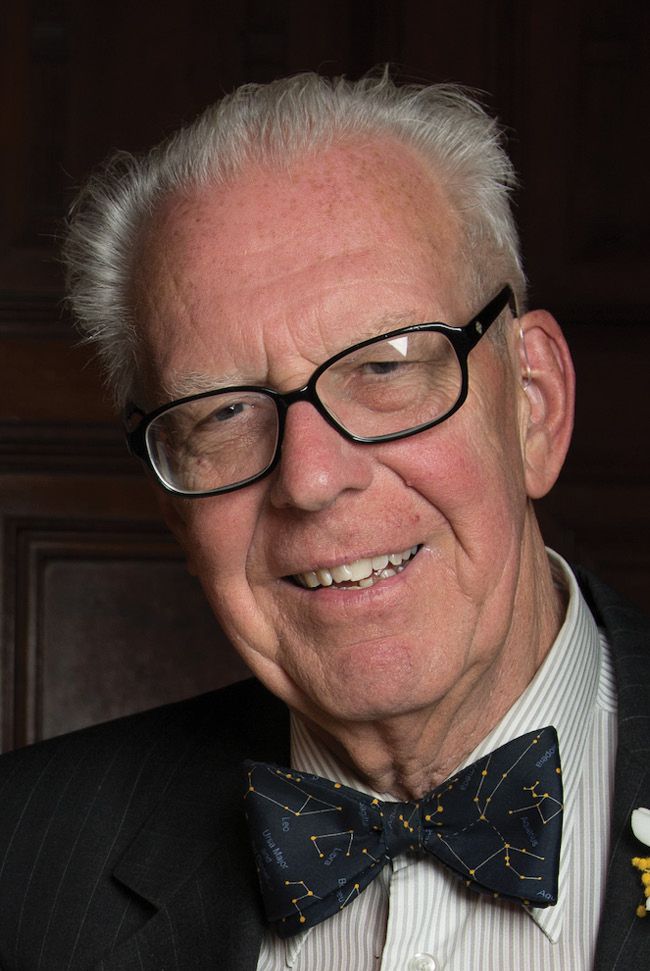Maarten Schmidt
DOI: 10.1063/PT.3.5163
Maarten Schmidt, the Francis L. Moseley Professor of Astronomy Emeritus at Caltech, died on 17 September 2022 in Fresno, California. His contributions on comets, quasars, and other topics profoundly shaped our view of the cosmos.

Maarten Schmidt
MATTHEW KUHN

Maarten was born on 28 December 1929 in Groningen, the Netherlands. Enduring five years under Nazi occupation and in blackouts, he became interested in the heavens during evening walks with his father and visits to his uncle, who was an amateur astronomer. At age 12 Maarten constructed his first telescope.
Despite the disruption of his early education by World War II, Maarten entered the University of Groningen at age 16. Upon receiving his bachelor’s degree in astronomy in 1949, he entered the graduate program at Leiden University. His initial work on comets with Jan Oort, his PhD adviser, occurred at the time of the creation of the model that became known as the Oort cloud. Maarten’s 1956 PhD thesis involved the new technique of radio astronomy; using observations at 21 cm of more than 800 hydrogen clouds, he constructed the first map of the spiral structure in the inner part of our galaxy.
His graduate career was unusually eventful. In 1950–51 he spent roughly 16 months in Kenya, where he participated in the Leiden Observatory’s program to measure the precise positions of stars. During the dike-system collapse in the Netherlands in 1953, Maarten joined a team that rescued nearly a thousand people.
Following graduation, Maarten accepted a Carnegie fellowship at the Mount Wilson Observatory, where he used the telescopes to investigate star clusters and was able to hone his observational skills. After a brief return to the Netherlands, he joined the faculty at Caltech in 1959. That same year he also published a relationship, now known as the Kennicutt–Schmidt law, between the star-formation rate and surface gas density in galaxies.
At the time, an unusual class of radio sources—later named quasars—were discovered; they appeared to be stars, but their spectra were unlike any known object, and some displayed spectacular brightness variations on time scales of days to weeks. Intrigued by that puzzle, Maarten obtained a spectrum of the brightest quasar in December 1962 with the Hale Telescope. He realized that several of the features matched the Balmer series of hydrogen, only increased in wavelength by a factor of 1.16.
After examining the possibilities of a gravitational redshift and a Doppler shift, Maarten concluded in his 1963 Nature paper that the redshift was produced by the expansion of the universe; quasars were beacons located at distances of billions of light-years with luminosities hundreds of times that of our entire galaxy. The brightness fluctuations demanded that the radiation be produced in a region whose scale was that of our solar system. It is now the consensus that quasars are supermassive black holes accreting approximately one solar mass each year.
In 1965 Maarten announced the identification of a quasar with a redshift in excess of two, which increased the volume of the observed universe by roughly an order of magnitude and provided the first glimpse of Lyman-alpha emission in the distant universe. The lack of strong absorption in the rest-frame UV measurements revealed that hydrogen in the intergalactic medium must be highly ionized. The discovery of that distant object was celebrated by a Time magazine cover in March 1966 containing a series of images of Maarten reverberating through the cosmos.
Maarten proceeded to lead a series of surveys to examine quasar evolution, and they demonstrated that the number density of quasars rose rapidly with increasing redshift. Starting in 1982 he and James Gunn employed a new detector, the CCD, to search for quasars at redshifts larger than four. Their program produced record-setting redshifts and showed that hydrogen in the intergalactic medium became less ionized as one moved to earlier epochs and that the quasar number density peaked at a redshift of approximately two to three.
In the 1990s Maarten’s interests turned to high-energy astrophysics. With members of the Rosat satellite team, he performed a deep field survey, using the Hale and Keck telescopes to determine the distances and luminosities of faint x‑ray sources. He also used an innovative analysis technique to create a uniform catalog of gamma-ray bursts from Compton Gamma-Ray Observatory archival data and determine the luminosity function of the bursts.
Maarten was quite active in service to the profession and held positions as chair of the division of physics, mathematics, and astronomy at Caltech; director of the Hale Observatories; and president of the American Astronomical Society. He received many awards for his scientific contributions, including the 1991 James Craig Watson Medal of the National Academy of Sciences and the Kavli Prize in Astrophysics in 2008. He had a wide variety of interests, and his sparkling sense of humor was particularly valued during cloudy nights at the telescopes. He was an excellent and thoughtful mentor of young scientists and a fierce dominos competitor.
More about the Authors
Donald P. Schneider. Pennsylvania State University, University Park.
